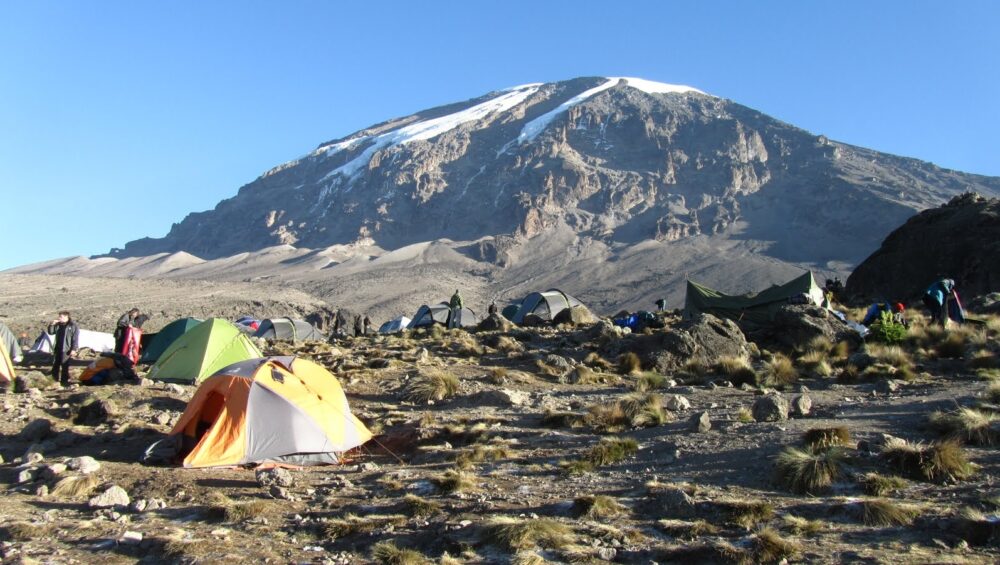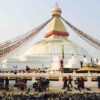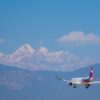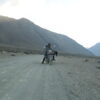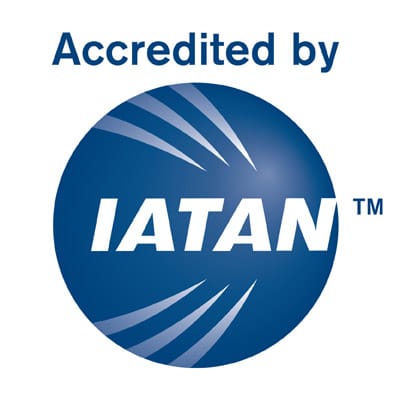WHICH ROUTE TO CHOOSE FOR HIKING MOUNT KILIMANJARO?
Selecting a Kilimanjaro climb route is one of the most important decisions you have to make. There are seven established routes to climb Mount Kilimanjaro:
- Marangu route
- Machame route
- Lemosho route
- Shira route
- Rongai route
- Northern Circuit route
- Umbwe route
The Marangu, Machame, and Umbwe route all approach from the south of the mountain (Mweka is used only for descent). The Lemosho, Shira, and Northern Circuit routes approach from the west. The Rongai route approaches from the north. The illustrations below depict a dimensional view of Kilimanjaro’s climbing routes and a close-up of the approaches to the summit.
Selecting a route is a hard choice for most climbers. To find the best Kilimanjaro route for you, the following considerations should be taken:
- The route’s scenery
- Difficulties
- Foot traffic
- High success rates
- Its altitude acclimatization characteristics
MARANGU (“COCA COLA”) ROUTE
Known as the “Coca-Cola” route, the Marangu route is a classic trek on Mount Kilimanjaro. It is the oldest, most well-established route. The Marangu route is also the only climbing route that uses the same path up AND down, which contributes to it being the most crowded climbing route on Kilimanjaro.
Many favor the Marangu route because it is considered the easiest path on the mountain, given its gradual slope. It is also the only route, which offers sleeping huts in dormitory-style accommodations.
The minimum number of days required for this route is five, although the probability of successfully reaching the top in that time is quite low. Spending an extra acclimatization day on the mountain is highly recommended when climbing Kilimanjaro using the Marangu route.
Marangu is favored only during the rainy season, where the hut accommodations are preferred over wet ground, or for those who only have five days to climb Kilimanjaro (which we do not recommend anyhow).
MACHAME (“WHISKEY”) ROUTE
Known as the “Whiskey” route, the Machame route is now the most popular route on the mountain. Compared with Marangu, the days on Machame are longer and the walks are steeper. The Machame route is considered a difficult route and is better suited for more adventurous folks and those with some hiking or backpacking experience.
Machame is indeed a more difficult climb in some respects, but it does have much higher success rates than Marangu, especially if you choose the seven-day version. (According to estimates about 60% of the climbers on Machame make it to the summit, and over three quarters reach the crater rim.)
The route begins from the south, then heads east, traversing underneath Kilimanjaro’s southern ice field before summiting. The minimum number of days required for this route is six days, although seven days is recommended.
The Machame route is scenically beautiful and varied.
LEMOSHO ROUTE
Featuring captivating scenic vistas, pristine wildlife, excellent acclimatization opportunities and low traffic of climbers, Lemosho is our personal first favorite for reaching the roof of Africa. The first two days on the Lemosho route take you through beautiful and very remote rainforest, with good chances of seeing wildlife. The start of the trail is also known as the Lemosho Glades.
The route begins in the west and rather than simply intersecting Shira Plateau (like Machame), Lemosho crosses it from Shira Ridge to Shira Camp. Climbers encounter low traffic until the route joins the Machame route. Afterward, Lemosho follows the same route through Lava Tower, Barranco, and Barafu, known as the southern circuit.
The minimum number of days required for this route is six days, although eight days is ideal.
Lemosho is considered the most beautiful route on Kilimanjaro and grants panoramic vistas on various sides of the mountain. It is our favorite route because it offers a great balance of low traffic, scenic views, and a high summit success rate. Thus, Lemosho comes highly recommended. Most of our clients use Lemosho.
SHIRA ROUTE
The Shira route approaches Kilimanjaro from the west and then joins the Machame route. Hence everything that has been said about the Machame climb route also applies to the Shira route. In fact, Shira was the original route and Lemosho is the improved variation. While Lemosho starts at Londorossi Gate and treks through the rain forest to Shira 1 Camp, the Shira route bypasses this walk by using a vehicle to transport climbers to Shira Gate, located near the Shira Ridge.
On the first day on the mountain, climbers begin their hike from 11,800 feet (3,600 m) and spend their first night at the same elevation at Simba Camp. Then, the route merges with Lemosho and follows the southern circuit route.
Although Shira is a varied and beautiful route, Lemosho is recommended over Shira due to the relatively high altitude of Shira’s starting point, which is accessed quickly by vehicle. It is possible that climbers will experience some altitude-related symptoms on the first day while camping at 11,800 feet.
Overall, Shira has excellent success rates if the schedule involves a night at Karanga Valley (making for a short and easy day before the summit day). However, the good success rate is partly due to the operators on this route being higher level than on the more crowded routes
NORTHERN CIRCUIT ROUTE
The Northern Circuit route is the newest, most exciting route on Kilimanjaro. The trek follows the Lemosho trail in the beginning, approaching Kilimanjaro from the west. However, instead of following the southern traverse like all the other west-approaching routes, the Northern Circuit traverses the mountain around the quiet, rarely visited northern slopes.
The Northern Circuit route is a nine day climb, which is the longest route in terms of time and distance traveled. The days spent at around 13,000 feet are great for acclimatization, resulting in the highest success rates for all routes on Mount Kilimanjaro.
With a high success rate, incredibly varied scenery, and a very low number of visitors, the Northern Circuit route is certainly one of the best routes on Kilimanjaro.
RONGAI ROUTE
The six-day version of the Rongai route (via Mawenzi Tarn) is the route of choice for those looking for an easy climb with excellent success rates that is still away from the crowds with great scenery and a wilderness feel to it. Rongai has low traffic, and it is the preferred route for those looking for an alternative to the crowded Marangu route, for those who would like a more remote hike, and for those who are climbing during the rainy season (the north side receives less precipitation).
The Rongai route has a reputation of being less scenic, but even if there is not quite as much variety as on Machame, it is still a spectacular route, especially in the later days. The camp beneath Mawenzi Peak is one of the most scenic places on the mountain.
Rongai is also one of the routes where seeing wildlife on Kilimanjaro is still possible. The Rongai climb has the same easy, gradual climb profile as the Marangu route. It rises very steadily, there aren’t any steep climbs involved, no major ups and downs.
The minimum number of days required for this route is six days, but seven days are recommended.
With Nature Horizons tours you have an 80 – 90% chance to make it to the crater rim, and 70 – 80% will make it to Uhuru Peak.
(If you have some trekking experience your chances to make it to the summit could be as good as 90%. (The remaining 10% comes down to the weather, individual preparation, individual altitude tolerance, and unforeseen mishaps.)
The Rongai route has another important advantage: the northern side of Kilimanjaro is a lot drier than the other side. Your chances NOT to get soaked on the first days are excellent. Especially if you climb Kilimanjaro during one of the wetter periods of the year, using Rongai makes a lot of sense.
UMBWE ROUTE
The Umbwe route is not a technical route, but it is a very direct, very steep, very tough, and in parts a very exposed route. It is considered very difficult and is the most challenging way up Mount Kilimanjaro. Due to the quick ascent, Umbwe does not provide the necessary stages for altitude acclimatization. Although the traffic on this route is very low, the chances of success are also low.
The route is offered at a minimum of six days, although seven days is recommended when attempting this route.
The Umbwe route should only be attempted by those who are very strong hikers and are confident in their ability to acclimatize. However, overall, the Umbwe route is not recommended and we discourage its usage for our clients.

